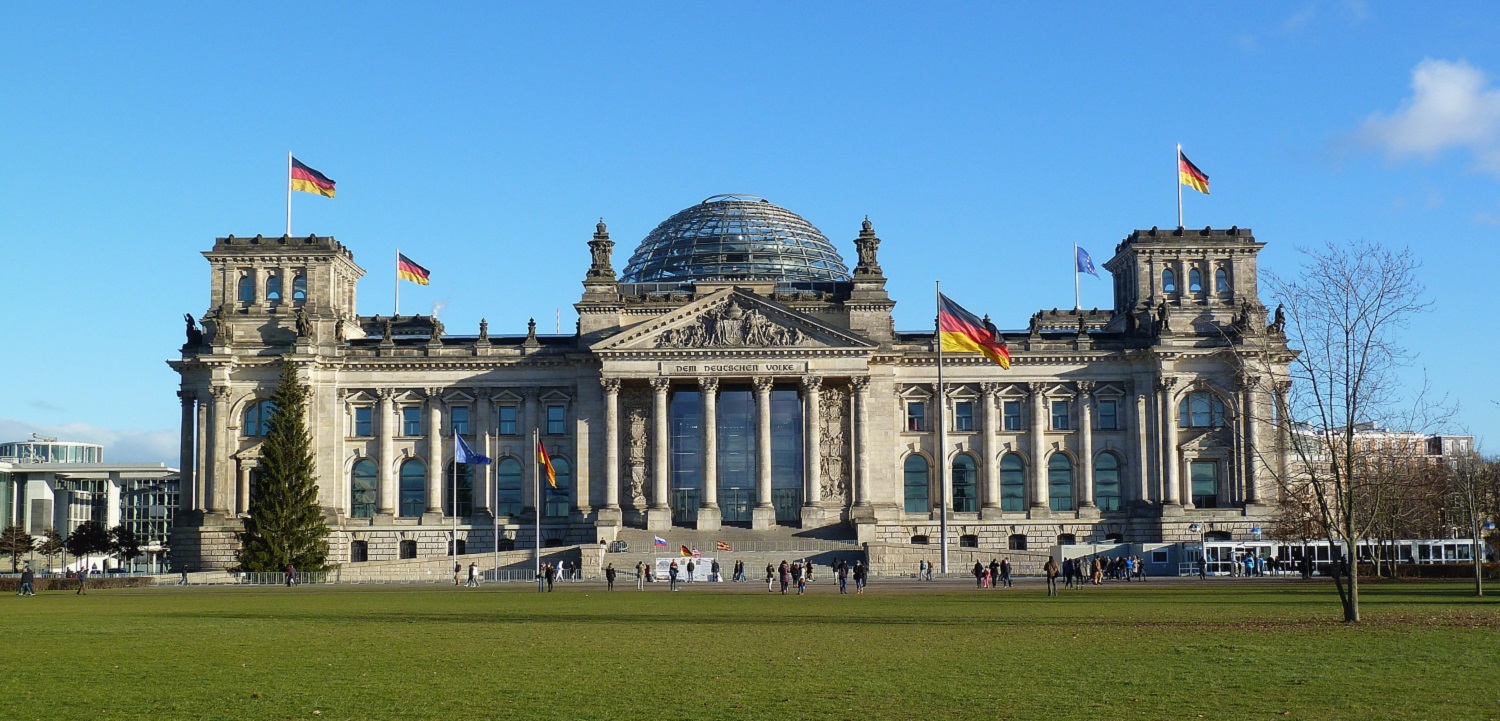The Best World War 2 Sights in Berlin to visit
Berlin is a city unlike any other. Along with its people, it endured a great deal of suffering and change, particularly during the second world war and the subsequent Cold War. As such, there is no shortage of WW2 sights and places of interest for you to explore during your stay. At each, you will find a sense of self-reflection and humility and a chance to consider what went on during our darkest years from various perspectives.
Humboldt Tours’ team of local experts have put together a list of some of Berlin’s historical highlights from the Third Reich era, grouped into WW2 Museums, War Memorials and other sights to visit. Why not explore them on your next visit to Berlin with our specialist Third Reich and WWII History Tour?
A Unique Culture of Remembrance
While in many cities you might find grand WW2 memorials dedicated to brave, victorious soldiers and adorned with national flags, history in Germany is remembered in a more nuanced manner. This is a result of our unique remembrance culture, which realises our role in events of the 20th Century, and seeks to remember them in order to avoid repeating our past.
Learn more about Remembrance Culture in our unique virtual tour. Why not enjoy before your visit?
Despite its extensive reconstruction, in Berlin you will find places of remembrance, information and commemoration everywhere. Historic buildings still standing are turned into educational facilities, museums or left untouched for you to consider and form your own perspective. Newer monuments are frequently abstract and left open to interpretation.
WW2 Museums in Berlin:
Topography of Terror
During the second world war the Gestapo were the much feared secret police used to enforce Hitler’s punishing regime. The site of their former offices now house the Topography of Terror Museum, an indoor and outdoor exhibition taking us on a historical journey through the Third Reich. From Hitler’s rise to power to the final collapse of the Nazi regime, the Topography of Terror provides in-depth insights into every development. The historical overview it provides helps to give visitors important context within which to major events and their triggers.
Below the exhibition, you can also visit the former cells and torture chambers used by the Gestapo. Visitors should be aware that they may find some parts of the exhibition upsetting due to the nature of the subject.
German Resistance Memorial Centre – Bender Block Museum
During the course of the Third Reich, there were many who pledged loyalty to Hitler. There were many more who were frightened into silence, and some who bravely spoke out or took up arms in order to resist.
Resistance members came from a variety of backgrounds, acting for a number of reasons. For some the regime went against their religious convictions. Some were communists or social democrats – and some were just students who realised the evils that were rising around them.
While there was no overall organised resistance against the Nazis in Germany, these small factions attempted to spread information, overthrow key figures or disrupt events throughout the 12 years of the Third Reich.
The German Resistance Memorial Centre is dedicated to those who gave their lives while standing up for democracy and justice, whatever their reasons.
In addition, the museum also explores the ways that Nazi propaganda was used by the party to manipulate and control the German population, with real examples from the wartime period on display. Through this, we get an opportunity to see what the resistance members were fighting against, and their courage in standing up for truth.
Berlin WW2 Memorials:
Soviet War Memorials
 The Berlin war memorials which exist in the city are largely Soviet ones. This is partly because at the end of the second world war the city was captured by the Red Army at great human cost. Two Soviet cemeteries can be found at Tiergarten and Treptow, both of which feature classic examples of Soviet-style memorials. It’s well worth visiting one or both to compare how the war was remembered on both Soviet and German sides.
The Berlin war memorials which exist in the city are largely Soviet ones. This is partly because at the end of the second world war the city was captured by the Red Army at great human cost. Two Soviet cemeteries can be found at Tiergarten and Treptow, both of which feature classic examples of Soviet-style memorials. It’s well worth visiting one or both to compare how the war was remembered on both Soviet and German sides.
While the Battle of Berlin and Soviet victory signified an end to fighting in Europe, the end of the second world war was not the end of history’s trials for Berlin.
The result of the second world war was to leave a lasting legacy on Germany, and to understand the full history of what happened to Germany and Berlin after WW2, it’s also worth exploring the following 40 years of Soviet Rule.
Berlin especially felt the impact of these 40 years, existing as a divided city for many of them.
Learn more about how Berlin’s division and The Cold War affected the character of our city here.
The Memorial to the Murdered Jews of Europe
A visit to The Memorial to the Murdered Jews of Europe is essential viewing. Little needs to be said about the atrocities faced by the Jewish populations of Europe during the Holocaust, but walking around the memorial helps to communicate some of the feelings to which words cannot do justice.
visit to The Memorial to the Murdered Jews of Europe is essential viewing. Little needs to be said about the atrocities faced by the Jewish populations of Europe during the Holocaust, but walking around the memorial helps to communicate some of the feelings to which words cannot do justice.
The memorial also features an underground museum dedicated to the innumerable stories and scars left behind after the Holocaust. The exhibition is free to visit, and incorporates personal testimonies, photographs and film from the era.
While most visitors are familiar with the tragic fate of Jewish people deported to concentration camps such as Sachsenhausen during WWII, the community’s history and contribution in Berlin goes far beyond the Third Reich era. Read our guide to Jewish Berlin here.
Other famous WW2 sights in Berlin and surrounding regions:
Reichstag:
Berlin’s Reichstag is one of our most famous landmarks, but it is of particular interest for those wanting to understand what happened here during the second world war. From the events which preceded WWII until its very end, the Reichstag was at the centre of numerous pivotal moments.
One of the most iconic images to emerge from the second world war is that of a Red Army soldier waving the soviet flag on the steps of the Reichstag – rubble lying all around. The photo was taken as Berlin fell following the Battle of Berlin, signifying the beginning of the end of conflict in Europe.
Nowadays, the Reichstag has once again become the seat of power in Germany. It has been renovated in spectacular style, its huge glass dome symbolising transparency, light and our commitment to unity and democracy.
Potsdam WW2 Sights:
Potsdam is a smaller city around 25km from Central Berlin and capital of the German state of Brandenburg. As the residence of the Prussian kings and German Kaiser until the end of WWI, Potsdam was the location for many key historical events, and still retains many neoclassical palaces such as the Orangery Palace, The New Palace, Cecilienhof Palace and Sanssouci Palace.
During the Third Reich, it became famous once again as the backdrop for decisions which would shape the future landscape of Germany. It was where, in the 1930s, Hitler and his Nazi party drew up their plans for their infamous “Final Solution”, leading to the destruction of the lives of millions of Jews and other marginalised people.
At the end of the war, Potsdam found itself at the centre of global events – this time the Potsdam Conference which would result in the decision to divide Germany following its surrender.
Potsdam is an easy trip from Berlin’s city centre. You can take a local train to get there in around 30 minutes, or alternatively take a one day private guided tour of Potsdam to ensure you soak up all the history it has to offer.
Brandenburg Gate
The gate is surely Berlin’s most iconic sight. From its glorious beginnings during the 18th century, to being closed off by the construction of the Berlin wall, it has stood through many of history’s great events.
The gate has been damaged, restored and reconstructed several times, and bullet marks are still visible to guests. However these days the Gate is a symbol of an open and unified German capital city. You can admire the monument from Berlin’s splendid Pariser Platz free of charge.
The Site of the Führerbunker
From January – May 1945, the Soviet Red Army began to close in on Berlin, eventually surrounding the city. Knowing that their chances of winning the coming battle were slim, Hitler retreated to an old air-raid shelter in search of safety.
In April 1945, it became clear that any possibility of hope was fading. Along with his companion (who he married just 40 hours before) Hitler took his own life on 30th April.
The site of the Führerbunker has mostly been destroyed over the years except for a few underground corridors. These are not open to the public, but a plaque and information board can be found on the site.
Without much on offer for passers-by, it can be hard to visualise the significance of this place. Visiting the area with a guide allows you to hear the complete story of this now destroyed piece of history.
Berlin undoubtedly offers some of the most fascinating WWII history of any European city. The sheer number and variety of sights would be enough to fill several trips to our city! If you have a special interest in WW2 history and would like to deepen your understanding of the era’s events, why not consider taking a guided tour on your next visit. Humboldt Tours offer a range of private tours on different topics including The Battle of Berlin and The Third Reich – all of which can be customised to suit your interests. Looking for something different? Simply contact us and we’ll work to create your dream private itinerary.


















